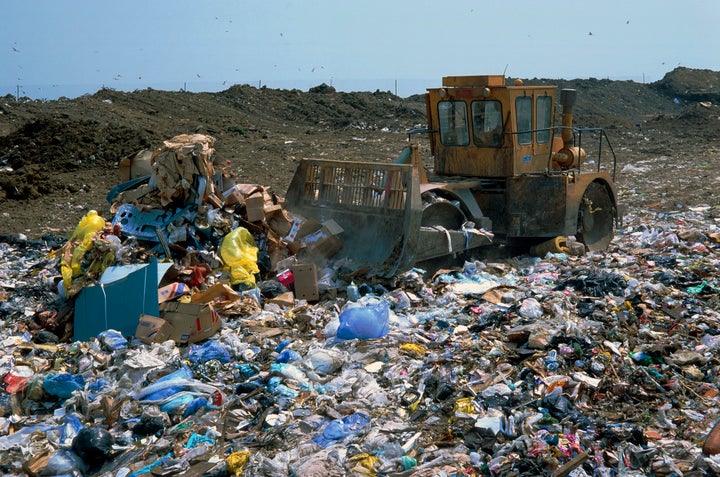Italian researchers have found that living near a landfill site may increase a person's risk of dying from lung cancer due to exposure to harmful gasses produced by rotting rubbish.
But the UK's Environment Agency has insisted people living near landfill sites in Britain should not be concerned by the widely-reported study.
An Environment Agency spokesperson told The Huffington Post UK that while all European landfills are subject to the Landfill Directive, which sets the minimum standards across Europe, each country also has its own domestic legislation.
"It is not possible to compare the results from the Italian research to the UK due to differences in regulatory standards," they said.
"In England we set strict conditions on emissions which operators must adhere to protect people and the environment."

Researchers in Italy evaluated the potential health effects of living near nine different landfills in the Lazio region.
More than 242,000 people were enrolled in the study from 1996 to 2008.
The results showed a strong association between hydrogen sulphide - a gas usually produced by decomposing vegetation - and deaths caused by lung cancer, as well as deaths and hospitalisations for respiratory diseases.
The annual average exposure levels of hydrogen sulphide was found to be 6.3 ng/m3 for those involved in the study.
However, people living close to larger landfills in Rome displayed much higher levels of exposure at an average of 45.ng/m3.
The researchers found that people living in areas with the highest levels of exposure to pollutants we 34% more likely to die from lung cancer than those who lived more than three miles away from the sites.
Additionally, people in the high exposure group were found to be 30% more likely to die from other respiratory diseases and 5% more likely to receive hospital treatment for all respiratory diseases. They were also 9% more likely to have been diagnosed with asthma.
Children who lived close to landfill sites were found to be the worst affected by pollutants.
Those living in high exposure areas were found to have an 11% increased chance of being admitted to hospital for respiratory disease and a 13% higher risk of asthma.
Story continues below slideshow...
At the end of the follow-up period there were 18,609 deaths among study participants.
However, the Environment Agency have been quick to point out that in England we have "very high" standards of landfill gas control to prevent uncontrolled emissions to air.
UK landfill sites also work to convert as much landfill gas into energy as possible.
The same standards of landfill gas management may not apply in other EU member states, resulting in greater exposure of the general public to toxic gasses, they said.
Co-author Francesca Mataloni commented that the evidence on the health of those living near landfills is "still controversial".
"Most of the published studies only use aggregate health data and do not adjust for social-economic status. We have used a residential cohort approach to attempt to overcome these limitations," she said.
"Respiratory symptoms were detected among residents living close to waste sites. These were linked to inhalation exposure to endotoxin, microorganisms, and aerosols from waste collection and land filling.
"This is consistent with other studies; however the association between living proximity to landfill sites and cases of lung cancer is a new finding."
The authors stressed that further studies need to be completed to confirm the true extent of the health implications of living near a landfill site.
The study is published in full in the International Journal of Epidemiology.